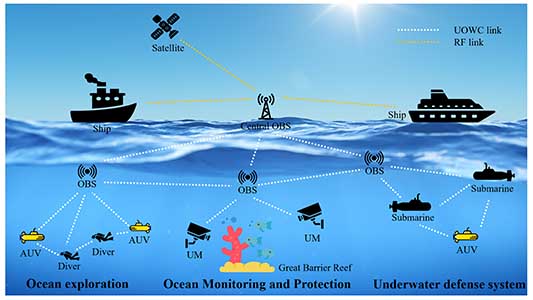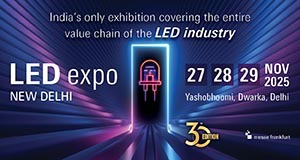Beneath the waves, where radio frequencies falter and acoustic signals lag, a silent revolution in communication is taking place. The vast, unexplored frontiers of our oceans demand a new paradigm for high-speed, reliable data transfer to support everything from climate monitoring and offshore energy to deep-sea exploration and defense. The answer lies not in sound or radio, but in light. The emerging frontier of underwater wireless optical communication (UWOC) is poised to transform our connection to the deep, and when fused with the pioneering concepts of energy harvesting and Hybrid Automatic Repeat Request (HARQ), it unlocks a future of self-sustaining, robust underwater networks.
The Deep-Sea Data Dilemma: Why We Need a New Solution
For decades, underwater communication has been dominated by acoustics. While acoustic waves travel far, they are severely limited by extremely low bandwidth, resulting in sluggish data rates unsuitable for modern applications like high-definition video streaming or real-time sensor data from autonomous underwater vehicles (AUVs). This is the equivalent of trying to download a feature film over a dial-up connection while exploring an alien world. The need for speed and capacity in the marine environment is urgent, driving researchers to seek a better alternative that can meet the insatiable data demands of 21st-century oceanography and industry.
Beams of Light: Harnessing the Optical Spectrum Underwater
Enter underwater wireless optical communication. UWOC leverages the properties of visible light, typically using high-intensity blue or green lasers or LEDs, as these wavelengths penetrate water with the least attenuation compared to other parts of the optical spectrum. This technology offers a staggering leap in performance, capable of achieving data transmission rates orders of magnitude faster than acoustic systems—reaching gigabits per second over short to medium ranges. It enables the instant transmission of crystal-clear video, vast oceanic datasets, and precise control signals, effectively turning the dark ocean into a highway of light and information, and opening new possibilities for real-time underwater observation and interaction.
The Power Paradox: How to Keep the Lights On Indefinitely
However, this brilliant solution introduces a significant challenge: power. Deploying and maintaining powered infrastructure on the seafloor or on autonomous platforms is notoriously difficult and expensive. The very devices that are meant to be untethered and free-moving—such as AUVs, sensor nodes, and modems—are constrained by finite battery life. Constantly retrieving these systems for recharging or replacing batteries defeats the purpose of persistent, long-term monitoring and exploration. This power paradox threatens to dim the promise of high-speed optical links, necessitating a way for these systems to generate their own sustenance from the environment they operate in.
Harvesting Energy from the Deep: The Ultimate Autonomy
The ingenious response to this power challenge is integrated energy harvesting. Imagine an underwater modem or sensor that can power itself by converting the abundant energy of its surroundings into electricity. Advanced systems are being designed to harness the kinetic energy from ocean currents and waves, the thermal gradients between different water layers, and even the solar energy that filters down from the surface. By incorporating these micro-harvesting technologies directly into the communication hardware, we pave the way for truly autonomous and sustainable underwater networks. These devices can theoretically operate indefinitely, continuously powering their optical transceivers and processing units without ever needing human intervention for a battery change.
Navigating Murky Waters: Ensuring Reliability with HARQ
Yet, the aquatic environment is notoriously unforgiving to light beams. Challenges like scattering from suspended particles, absorption by water itself, and misalignment due to water movement can corrupt data packets, leading to errors and lost information. To combat this, UWOC systems integrate a sophisticated protocol known as Hybrid Automatic Repeat Request (HARQ). HARQ is a smart error-control method that doesn’t just simply ask for a retransmission when a packet is damaged. It combines the damaged packet with the new retransmission, using the collective information to correctly reconstruct the original data without needing as many repeats. This intelligent process dramatically enhances reliability and energy efficiency, which is absolutely critical for systems running on precious harvested power.
A Symbiotic Trinity: The Confluence of Light, Power, and Reliability
The true genius lies in the symbiotic relationship between these three technologies. UWOC provides the high-speed data pipeline, energy harvesting provides the perpetual power source, and HARQ ensures the communication is robust and efficient, conserving every joule of harvested energy. HARQ’s ability to reduce the number of required retransmissions directly translates to lower energy consumption, which is paramount for a device that might be operating on a trickle of power from a thermal generator. This trinity creates a resilient, self-powered communication node that can survive and thrive in the harsh undersea world for extended durations.
Charting the Course: A Connected and Sustainable Oceanic Future
The integration of underwater wireless optical communication with energy harvesting and HARQ is more than a technical achievement; it is the key to unlocking a permanently connected ocean. It promises a future where fleets of AUVs can communicate seamlessly and recharge their batteries from the ocean’s own energy, where permanent sensor networks on coral reefs or tectonic plates can send real-time HD footage for years without maintenance, and where our understanding of the marine world is limited only by our curiosity, not by cables or battery life. This powerful convergence illuminates the path toward a sustainable and profoundly deeper exploration of our planet’s final frontier.
About the author :
I am B. E. in Industrial Production and served as lecturer in three different polytechnics for 10 years. I am also a freelance writer and cartoonist.












